Flies and Lines for Drop-Offs
Losing flies on drop offs? Not catching anything? It might be your choice of fly line..
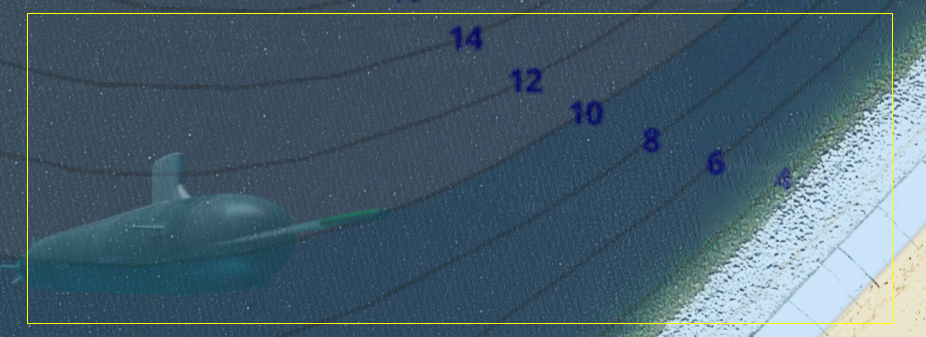
May 2025
Between casting far enough (exposing your back cast to jagged rocks) and fishing just above the rocks (exposing your fly to sharp angled snags), you'll encounter plenty of opportunities to lose flies while fishing sloped structure from the bank. But if you have the right lines with you, you might be able to avoid unnecessary losses, and fish more effectively at the same time.
Floating lines obviously cast the best, covering the top of the water column. To fish deeper you might want to use a sinking line… but uniform sinking lines can actually exacerbate problems when fishing deeper along drop-offs.
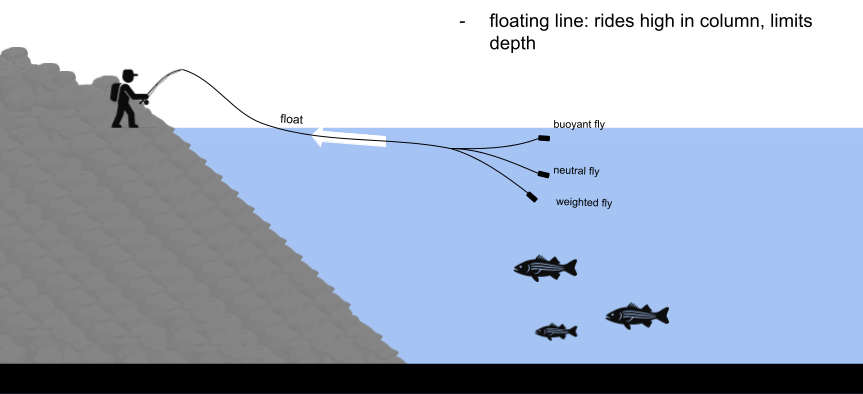
You might be able to get away with an intermediate line, but type 3 (and above) sinking lines will cause trouble on drop-offs due to their uniform sink rate. This is especially exacerbated with weighted flies. The section of line closest to your feet will settle on bottom while the tip of the line is still sinking into deeper water. This means that as you retrieve, a point of contact will always exist where your flies are forced to encounter bottom rocks or other snags. This can be alleviated with rapid retrieve speed, but that also compromises the depth your able to fish.
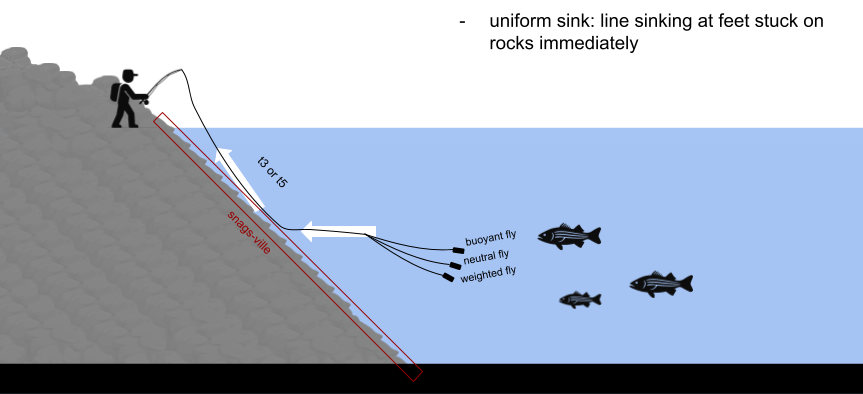
A more intriguing approach is to fish a buoyant fly, allowing the hook to stay above snags during the retrieve. In fact, specialty lines have now expanded on that idea.
Enter parabolic lines, sometimes called seeking lines, or sweep lines, they're all nicknames for the same formula. They have a slower sinking tip, and a fast sinking belly, that when paired with light (or buoyant flies) helps you keep your flies in action for longer portions of your cast without dragging over snags. Additionally, you can fish higher in the column as the line starts to dive, and the lower column while you retrieve, fishing more vertical depth than with other line types. This U shaped retrieval path is where the parabolic name comes from. It’s an intriguing tactic for fishing drop-offs when paired with light flies—and as useful on foot as from a boat. Moreover, these lines help fish deep without having to cast super far.
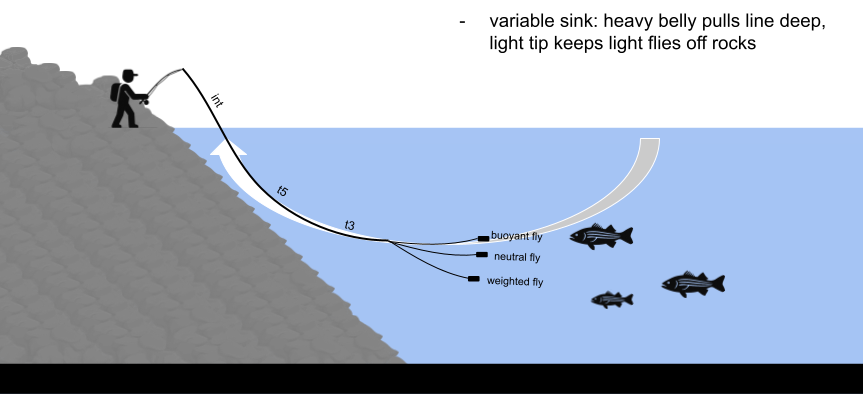
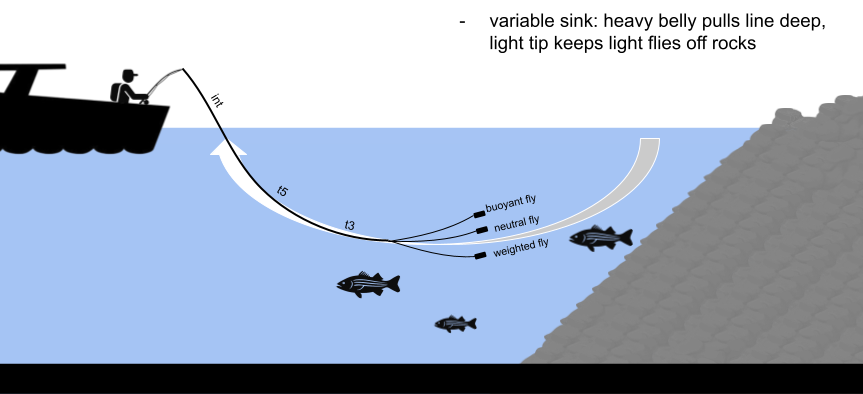
It works on all reservoir fish: trout, smallmouth, bass, deep water pike too!
SA Parabolic Line
The Scientific Angler's parabolic line not only works great for fishing drop-offs, but can also cover other situations, probing from shallow to deep without needing to change lines. If not indicator fishing, it's a favorite of ours when first reaching for sinking lines to search on lakes and reservoirs.

Flies for Parabolic Lines
If you're fishing parabolic lines, come prepared with neutral, and even buoyant fly offerings. Let the line do the work so the flies can dance.
Seal Bugger
Foam Arsed Blob
Booby Fly
Snake Fly
More on fishing drop-offs



